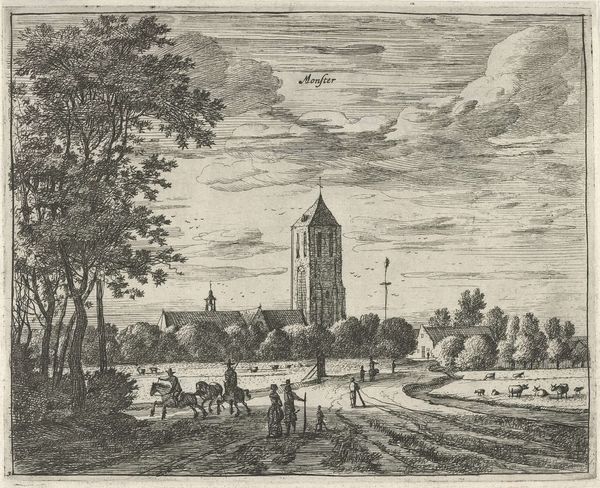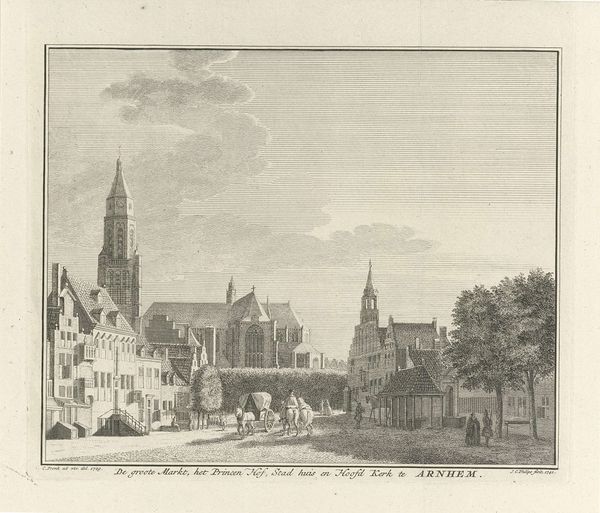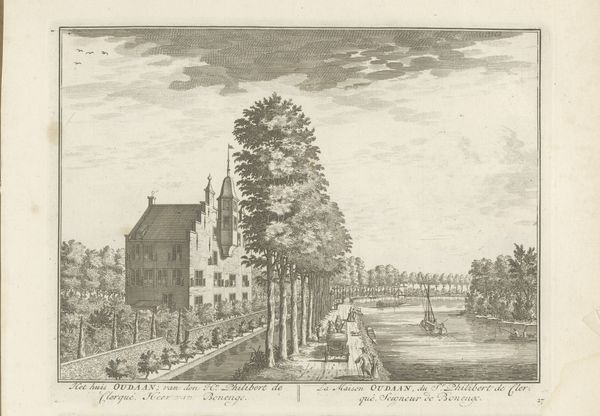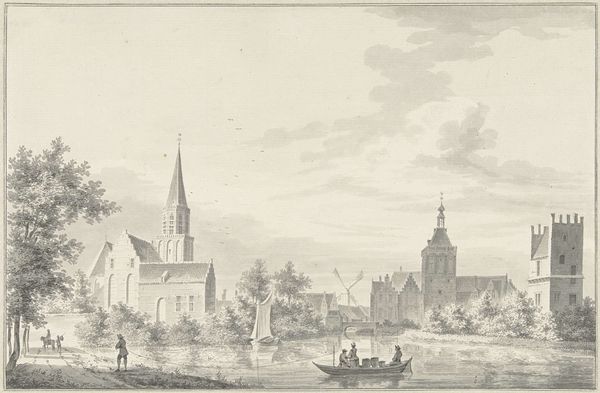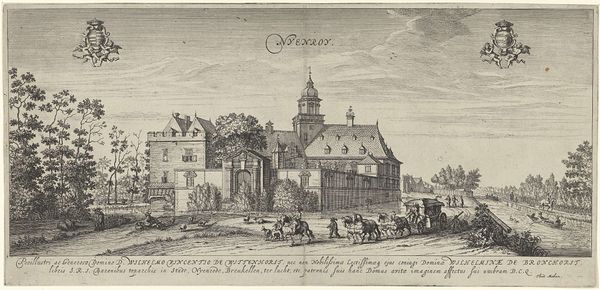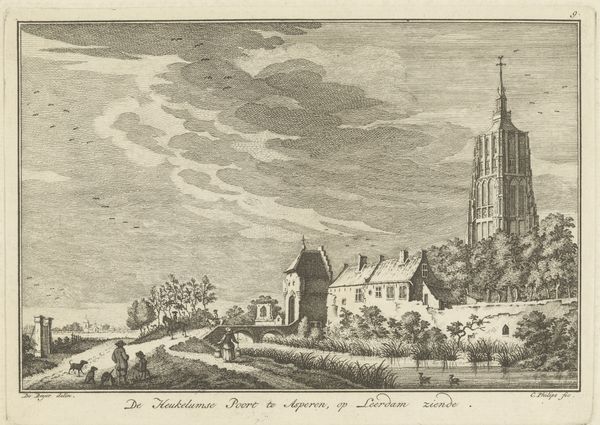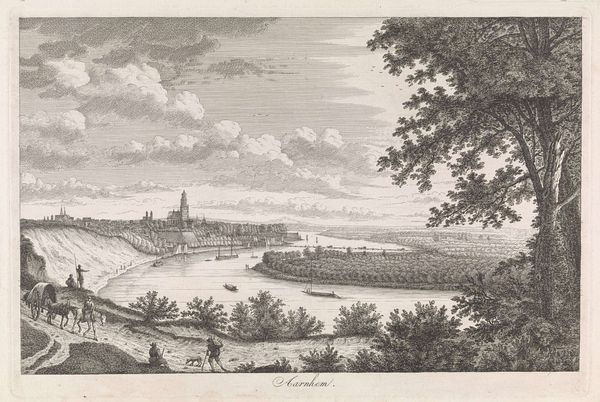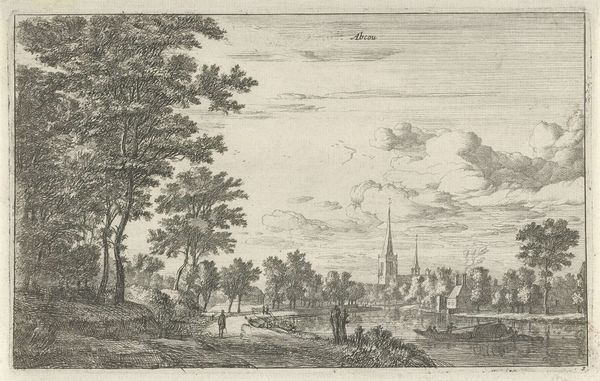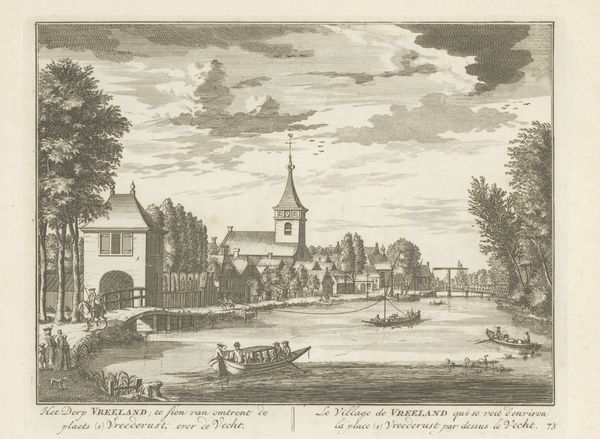
print, engraving
#
dutch-golden-age
# print
#
old engraving style
#
landscape
#
cityscape
#
engraving
Dimensions: height 80 mm, width 115 mm
Copyright: Rijks Museum: Open Domain
Curator: The detail in this little world is captivating. Editor: Indeed. What first strikes you about this engraving? I find a certain tranquility. The subdued palette and pastoral figures create a harmonious scene. Curator: Yes, there's an understated beauty. But beneath that placid surface, I see something else. There’s a story about representation here; what the artist includes and, crucially, what they omit from this rendering. Editor: Let's delve into that. This work, titled "Gezicht op Utrecht," was rendered between 1727 and 1733 by Abraham Rademaker. Its modest size invites close inspection. The location, Saint Geerte, anchors the imagery in Utrecht. The prominent presence of church spires certainly infuses a layer of religious significance into the depiction. Curator: Exactly! Rademaker presents what seems a simple, rural idyll, yet it’s framed in the aftermath of the Dutch Golden Age, a period rife with complex social hierarchies. Consider, for instance, the people shown in the picture—anonymous and seemingly benign, yet deliberately situated to perpetuate particular power dynamics. Who were the figures outside the frame? Who gets a voice? Editor: So, you are suggesting the symbolic value resides not just in what is shown, such as the religious spires suggesting the importance of religion in the area, but in what remains unseen or deliberately marginalized? I do find a certain symbolism also in the fact it's an engraving— suggesting replication, availability for everyone— but what is represented is also controlled. The engraving technique itself suggests permanence. Curator: Precisely. These prints became tools for the dissemination of a particular image of Dutchness. It becomes not just a vista of the landscape but of who it belongs to and for whom it thrives. Editor: I’m still struck by how this vista invokes the feeling of a peaceful journey, a literal pilgrimage on the periphery of a rising city. This visual rhetoric works even centuries later. Curator: Absolutely, the beauty still shines, it has enduring value as a lens through which we can critically look at a specific chapter in history and a society's narrative constructed around identity and belonging. Editor: Ultimately, "Gezicht op Utrecht" leaves me with an appreciation for both the beauty of simplicity and the layered depths that even a seemingly straightforward image can hold.
Comments
No comments
Be the first to comment and join the conversation on the ultimate creative platform.
